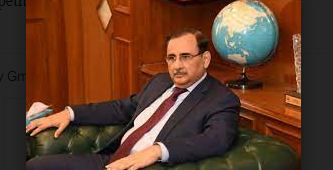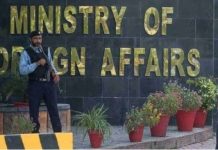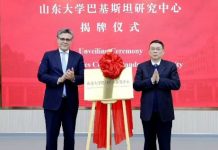Mian Anjum Nisar says no benefit of macroeconomic stability at cost of halt in industrial growth
ISLAMABAD, APR 30 /DNA/ – As the country has registered a current account surplus of $654 million in March 2023 first time after Nov 2020 the Federation of Pakistan Chambers of Commerce & Industry’s Businessmen Panel (BMP) has warned the authorities that drop in Current Account Deficit (CAD) at cost of industrial growth has no benefit, as the current account deficit reduction should be based on growth in exports, resulting into expansion in industrial production as well as employment generation.
FPCCI former president and Businessmen Panel (BMP) chairman Mian Anjum Nisar noted that cumulatively current account deficit declined to $3.4 billion dollars Jul-Mar 2023 against a deficit of $13 billion of same period but this macroeconomic stability has been achieved at the cost of halt in industrial growth and import restrictions which is not acceptable. Unfortunately the present turnaround is largely due to the fall in imports that has accompanied by sharp slowdown in growth after the currency devaluation and gradual increase in interest rates, which sent shockwaves through the economy.
This transformation from deficit into surplus should have been due to recovery in exports and increase in remittances with the support from policies and administrative initiatives of the government but this is not the fact, unfortunately.
The fact is that the massive decline in imports has slowed down overall economic activities, ultimately hitting the GDP growth rate, he said adding the drop in current account deficit is a big achievement as a sign of macroeconomic stability but it is never beneficial for industrial growth-the real indicator of economic performance and development of a nation.
While this is certainly good news as it would reduce the pressure on the country’s dwindling foreign exchange reserves, yet the surplus for March has been achieved at the cost of four key deteriorating macroeconomic indicators: (i) due to severe exchange rate restrictions, necessitated because of low foreign exchange reserves, that include limitation on advance payments for imports against letters of credit, advance payments up to a certain amount per invoice for import of eligible items. There has been a steady decline in the large scale manufacturing index (LSMI) calculated at negative 5.56 percent Jul-Feb 2023, having a negative implications on exports, which declined in dollar terms from $23 billion in Jul-Mar 2022 to $21 billion in the comparable period of this year, leading to job losses with around 7 million job losses in the textile sector alone while growth rate has declined considerably and is projected at 0.5 percent for the entire year by the International Monetary Fund (IMF).
Mian Anjum Nisar argued that the current account surplus must have been based on growth in exports, resulting into growth in industrial production as well as employment generation. But unfortunately the present turnaround is largely due to the drop in imports, leading to an incisive slowdown in growth after unprecedented hike in markup rates in the past and rupee devaluation, which sent shockwaves through the economy. He said that the large decline in imports has been the real force behind the reduction in the deficit because exports and remittances are also down, he added. He observed that the surplus in balance of payment is definitely a positive omen for the government, which is struggling with slow economic growth and high inflation.
However, despite massive decline in rupee’s value, the country’s exports have failed to record any visible improvement. The GDP growth continued to decline, indicating that government managed to ease current account deficit by chocking the economy.
The problem with the policies currently being implemented is two-fold: while the government is laying the entire blame for upward revision in utility rates to achieve full-cost recovery on the IMF’s prior condition for the ninth review yet it has made no effort to implement meaningful structural reforms that would usher in an era of efficiency in all those sectors that it operates and which are running at massive losses – reforms that have the capacity to give the general public some hope that the country is embarked on a program with the capacity to finally and conclusively resolve all prevailing economic issues.
The surplus may be pleasant news for multilateral lenders including the International Monetary Fund, since the dollar denominated loans are safer now. But, at the same time this has been achieved at the cost of a sharp slowdown in the economy that has caused millions of jobs.
FPCCI former President said that the government’s harsh import policy along with high cost of doing business due to continued hike in fuel rates and energy tariffs had almost halted the industrial production.
He said that for the first time during the decade, the growth in large-scale manufacturing was restricted in the last fiscal year after almost all major industries reporting decline in their output, raising concern over a deepening economic slowdown and a widening unemployment ratio.
He emphasized upon the need for continued process of institutional reforms, ensuring financial discipline with a view to consolidate the process of stabilizing economy. Structural transformations are required in all sectors, including agriculture, industry and services, to improve productivity and export competitiveness.












